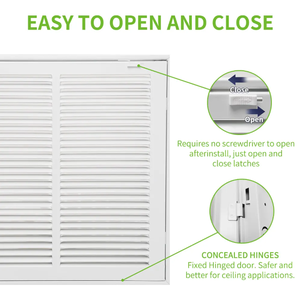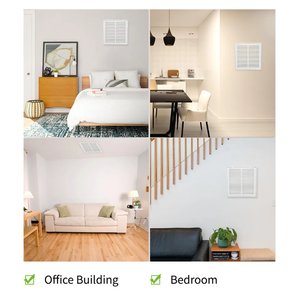
All categories
Featured selections
Trade Assurance
Buyer Central
Help Center
Get the app
Become a supplier

(1862 products available)














































In the realm of commercial cleaning, stage 2 air filter play a pivotal role in maintaining air quality and ensuring a safe environment. These devices are designed to remove contaminants, allergens, and particulates from the air, promoting healthier indoor spaces. Often integrated into HVAC systems, stage 2 air filter are crucial for industries where air purity is paramount, such as healthcare, manufacturing, and hospitality. Their ability to filter out pollutants enhances the overall efficiency of heating and cooling systems, making them a valuable asset in both residential and commercial settings. As air quality concerns continue to rise, the demand for effective stage 2 air filter solutions grows, prompting advancements in technology and design.
There is a diverse range of stage 2 air filter available, each tailored to specific needs and environments. Common types include HEPA filters, activated carbon filters, and electrostatic filters. HEPA filters are renowned for their ability to capture at least 99.97% of particles as small as 0.3 microns, making them ideal for medical and laboratory settings. Activated carbon filters excel at removing odors and gaseous pollutants, making them suitable for environments where air freshness is a priority, such as restaurants and offices. Electrostatic filters use charged plates to attract particles, offering an efficient solution for residential applications where dust and allergens are prevalent. Each type of stage 2 air filter serves a distinct purpose, ensuring optimal air quality for its intended use.
The functionality of stage 2 air filter extends beyond mere filtration. They provide essential benefits such as improved air circulation, reduced strain on HVAC systems, and enhanced energy efficiency. Features such as changeable filter media and automatic cleaning mechanisms contribute to their usability and longevity. Changeable filter media allow users to replace filters as needed, maintaining optimal performance and prolonging the lifespan of the system. Automatic cleaning mechanisms, found in advanced stage 2 air filter models, ensure consistent operation by periodically removing accumulated debris. Additionally, the design of these filters often includes indicators to signal when maintenance is required, promoting proactive care and preventing costly repairs. The integration of these features makes stage 2 air filter indispensable in maintaining a clean and efficient indoor environment.
The construction of stage 2 air filter involves a variety of materials, each selected for its unique properties. Fiberglass, foam, and pleated paper are commonly used in filter media, each offering distinct advantages. Fiberglass filters are known for their durability and low cost, making them suitable for basic filtration needs. Foam filters provide excellent particle retention and are often used in environments with high dust levels. Pleated paper filters maximize surface area, enhancing filtration efficiency and longevity. The choice of materials in stage 2 air filter impacts their performance, durability, and suitability for specific applications. As environmental sustainability becomes increasingly important, manufacturers are exploring eco-friendly materials that maintain high filtration standards while minimizing environmental impact.
Using stage 2 air filter effectively necessitates understanding their capabilities and limitations. Selecting the appropriate filter type based on the specific contaminants and air quality requirements is crucial. Regular maintenance, including timely replacement or cleaning, ensures that filters operate at peak efficiency. In commercial settings, implementing a scheduled maintenance program for stage 2 air filter can prevent system failures and extend the life of HVAC equipment. Proper installation is also key, as incorrectly fitted filters can compromise their effectiveness and lead to increased energy consumption. Educating users on the importance of air quality and the role of stage 2 air filter in achieving it can foster a healthier and more productive environment. By optimizing the use of these filters, industries can significantly enhance indoor air quality, contributing to the well-being of occupants and the operational efficiency of buildings.
Choosing the right stage 2 air filter involves a thorough understanding of various factors that influence air quality and system performance. First, consider the environment in which the filter will be used. For industrial settings, where dust and particulate matter are prevalent, a high-efficiency filter such as a HEPA or activated carbon filter may be necessary. These filters are designed to capture fine particles and absorb odors, ensuring a cleaner atmosphere. Additionally, the size and compatibility of the stage 2 air filter with existing HVAC systems are crucial. Ensuring the filter fits properly without gaps can prevent air bypass and maintain filtration effectiveness.
Another aspect to consider is the MERV rating of the stage 2 air filter. The Minimum Efficiency Reporting Value (MERV) indicates the filter's ability to capture particles of varying sizes. Higher MERV ratings correspond to finer filtration capabilities, which might be necessary for environments requiring stringent air quality standards, such as hospitals or laboratories. However, selecting a filter with a MERV rating that is too high for your system can lead to increased resistance and energy consumption. Balancing efficiency with system compatibility is key to optimizing the performance of stage 2 air filter solutions.
Cost-effectiveness is also an important consideration when selecting stage 2 air filter. While high-performance filters may offer superior air purification, they often come at a higher initial cost and require more frequent maintenance. Evaluating the total cost of ownership, including replacement and maintenance expenses, can aid in making an informed decision. Additionally, considering the environmental impact of the filter materials can be beneficial. Opting for sustainable and recyclable materials can reduce the ecological footprint of stage 2 air filter while maintaining high filtration standards.
MERV ratings are critical as they determine the efficiency of stage 2 air filter in capturing particles of different sizes. A higher MERV rating signifies better filtration capabilities, which can be essential in environments where air quality is paramount. However, filters with high MERV ratings may require more energy to operate, and it's important to ensure compatibility with your HVAC system to avoid increased energy costs.
The frequency of replacing or maintaining stage 2 air filter depends on several factors, including the type of filter, the environment it's used in, and the manufacturer's recommendations. In general, filters should be checked regularly and replaced or cleaned as needed to ensure optimal performance. A clogged or dirty filter can reduce air flow and efficiency, leading to higher energy costs and potential system damage.
Yes, stage 2 air filter can effectively reduce allergens such as pollen, dust mites, and pet dander in indoor spaces. HEPA filters, in particular, are renowned for their ability to capture tiny allergen particles, making them ideal for homes and businesses where occupants suffer from allergies. Selecting the appropriate filter type based on specific allergen concerns can significantly improve indoor air quality.
Eco-friendly options are available for stage 2 air filter, with manufacturers increasingly focusing on sustainable materials and designs. These filters use recyclable or biodegradable materials and are designed to have a lower environmental impact. Choosing eco-friendly filters can contribute to sustainability efforts without compromising on air quality.
While high-efficiency stage 2 air filter offer superior filtration, they can pose challenges such as increased pressure drop and energy consumption. It's important to ensure that your HVAC system can handle these demands without compromising performance. Additionally, high-efficiency filters may require more frequent maintenance and replacement, which can add to operational costs.